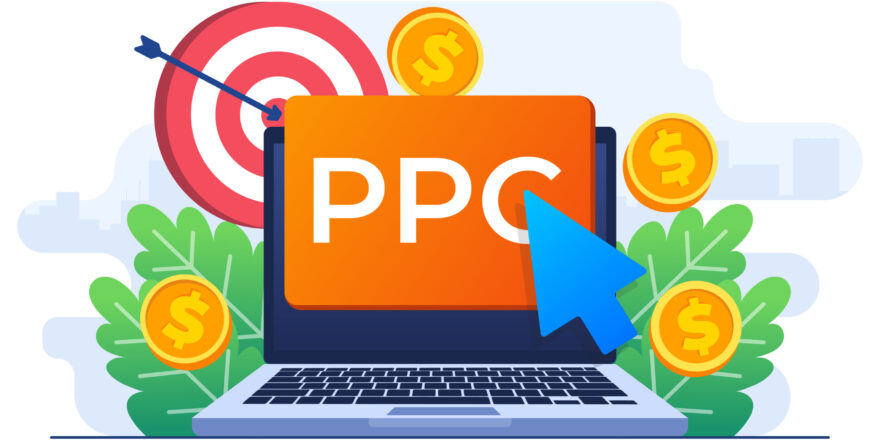Pay-Per-Click (PPC) advertising can be a game-changer for brands that want to drive targeted traffic and boost conversions. However, without the right strategy, it can easily turn into a money pit with little return. Effective PPC campaigns require a well-thought-out strategy, ongoing optimization, and constant monitoring to ensure that each click leads to a valuable result.
Whether you’re running ads on Google Ads, Facebook, or any other platform, here’s how to launch PPC campaigns that actually convert — without wasting your marketing budget.
1. Define Clear Objectives and Audience Segments
Every successful PPC campaign starts with a clear objective. Knowing exactly what you want to achieve ensures your campaign remains focused, and your budget is spent wisely. Without clear objectives, you risk running ads without understanding the results you expect.
Key objectives can include:
- Driving website traffic: Attract visitors to your site for more exposure.
- Generating leads: Encourage users to fill out a form or download a resource.
- Increasing sales: Push for product purchases, whether physical or digital.
Once your objective is clear, the next step is identifying your audience segments. Having a narrowly defined audience will help you avoid spending money on people who aren’t likely to convert.
Consider factors like:
- Demographics: Age, gender, location
- Interests: What are their hobbies or passions?
- Behavior: How do they behave online? What have they searched for before?
For example, if you’re selling high-end outdoor gear, your ads should target people who have an interest in outdoor activities or are actively searching for premium gear.
Takeaway: The more specific your targeting, the less money you waste on irrelevant clicks.
2. Perform Laser-Focused Keyword Research
Choosing the right keywords is crucial in determining whether your PPC campaign will succeed or fail. The wrong keywords can lead to high costs and poor returns. It’s not about bidding on the most popular or broad terms; it’s about choosing keywords with intent that align with your campaign goals.
Focus on:
- Long-tail keywords: Phrases with 3 or more words (e.g., “buy waterproof hiking shoes in India”).
- High-intent keywords: Words that show purchase intent (e.g., “buy CRM software for real estate”).
- Negative keywords: Block irrelevant searches by excluding terms that aren’t likely to convert.
Don’t forget to analyze competitor keywords. Tools like SEMrush or SpyFu help identify keywords your competitors are bidding on, allowing you to target untapped opportunities.
By choosing the right mix of keywords, you can ensure that every click comes from someone who is actively interested in what you offer.
Takeaway: Smart keyword selection saves you money by driving targeted traffic, reducing wasted spend.

3. Craft Click-Worthy, Conversion-Focused Ad Copy
Even the most targeted ads won’t convert if your copy isn’t compelling. The key to high-converting PPC ads is to make your message relevant, engaging, and clear. Each ad needs to speak directly to the pain points and needs of your target audience.
Here’s how to craft ad copy that converts:
- Clear Value Proposition: Let the user know immediately why they should care (e.g., “Get 30% off your first purchase”).
- Strong Call-to-Action (CTA): Encourage users to take immediate action, such as “Buy Now,” “Get Your Free Quote,” or “Learn More.”
- Urgency: Include phrases like “limited time offer” or “only a few left” to create a sense of urgency.
Don’t forget to A/B test multiple ad variations. Test different headlines, CTAs, and even images to see what resonates most with your audience.
Takeaway: Your ad copy should grab attention, build trust, and persuade users to click.
4. Build Landing Pages That Convert — Fast
Sending traffic to a generic homepage is a huge mistake. The landing page plays an equally important role in converting visitors once they click your ad. It must:
- Match the ad message: If your ad promotes a discount on a specific product, ensure the landing page showcases that product.
- Load quickly: Slow pages drive users away. Aim for under 3 seconds.
- Be simple and clean: Limit distractions. Only focus on the CTA — whether it’s filling out a form, downloading a guide, or making a purchase.
- Build trust: Use social proof, like testimonials or reviews, to reassure visitors that your offer is legitimate.
- Optimize for mobile: Ensure your landing page is responsive and mobile-friendly, as most users browse on mobile devices.
A well-optimized landing page boosts your conversion rate, lowering your CPC and ultimately improving your overall PPC campaign performance.
Takeaway: A compelling landing page turns clicks into conversions — it’s the key to campaign success.
5. Monitor, Optimize, and Scale Smartly
The work doesn’t stop after launching your PPC ads. Constant monitoring and optimization are crucial to ensuring that your campaign remains profitable.
Key metrics to track include:
- CTR (Click-Through Rate): A low CTR can indicate your ad isn’t relevant to the audience.
- CPC (Cost Per Click): Monitor this closely to ensure you’re not paying too much for clicks.
- Conversion Rate: The most important metric, as it tells you how many clicks are turning into actual business outcomes.
- ROAS (Return on Ad Spend): This is the ultimate measure of your PPC success. Ensure your returns justify your ad spend.
After monitoring performance, optimize your campaign by:
- Pausing low-performing ads
- Shifting budget to high-converting keywords
- A/B testing new ad copy and landing page elements
Takeaway: Continuous monitoring and refinement are the keys to maximizing ROI and scaling smartly.

Conclusion: Every Click Counts — Make Yours Convert
Launching a high-converting PPC campaign doesn’t require a massive budget — it requires smart targeting, effective ad copy, and optimized landing pages. By focusing on the right audience, utilizing keyword research, and constantly refining your campaign, you can ensure that each click brings meaningful results.
Remember, PPC is a journey, not a one-time event. Optimize, test, and scale your campaigns over time for sustained success. With the right approach, you’ll see better conversion rates, lower costs, and a positive ROI.




